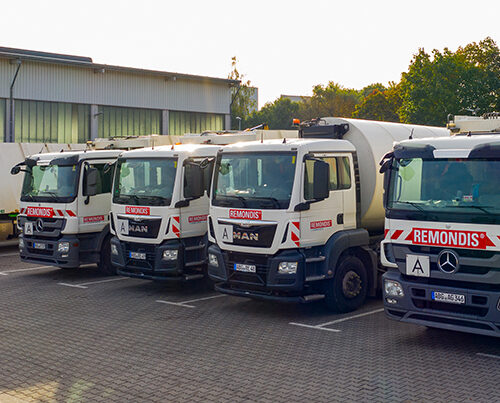Germany has set about completely restructuring its energy sector as it heads towards becoming net zero. It has an ambitious plan – a plan that has become even more important as the country looks to wean itself off Russian oil and gas. In a second interview, Maik Schlapmann and Tobias Wilming, managing directors of XERVON Wind, spoke about the growing importance of wind power, the latest market changes and how XERVON Wind helps to curb climate change and grow energy security. Here you can read their first interview.
Mr Schlapmann and Mr Wilming, the last few months have shown that the need to switch from fossil fuels to renewables is greater than ever. What does all this mean for wind energy?
Tobias Wilming: The expansion of wind energy is the most important cornerstone of the energy transition. If we wish to remain on a firm footing in the future, then it is essential to drive forward this growth and scale up the installed capacities. And this must all happen in the very near future. The recent changes within the energy sector have made it particularly clear that we need to accelerate this growth and set the right course so that wind energy becomes more widely available.
As is the case with all sectors, though, wind energy also depends on the right framework conditions being in place.
Maik Schlapmann: That’s certainly true. The German government drew up a package of immediate measures during the first half of this year. One point in this package specifically declares the use of renewable energy to be in the overriding public interest. One of its goals is for Germany’s installed onshore wind capacity to have increased to around 115 gigawatts of electricity by 2030 and offshore wind energy to at least 30 gigawatts. Compared to 2021, this would effectively mean doubling installed onshore wind capacity and quadrupling the amount of electricity generated in the North Sea and Baltic Sea. These latest goals reflect the Government’s plans to drive forward and accelerate expansion. At the end of the day, though, it will all come down to the end result. And if this is to be achieved, then there mustn’t be too many regulatory and organisational obstacles along the way.
In practice, though, it will be an enormous challenge for the wind energy sector to achieve such rapid and extensive growth. How can XERVON Wind support wind farm operators and help the sector to reach this goal?
Tobias Wilming: Both onshore and offshore wind turbines are subject to statutory inspection intervals and must be regularly serviced and, where necessary, repaired. Being an independent service provider, we can help ensure that the very most is made of the growing capacity and that the wind turbines achieve the best possible output.
Maik Schlapmann: The increasing number of turbines alone will mean there will be a significant growth in demand for our services to boost turbine availability, optimise operating conditions and maximise power output. Besides this, though, XERVON Wind sees itself as being a ‘complete’ partner for wind farm operators, i.e. we not only provide them with services but are there to support them when they are looking to install new wind turbines as well – both on land and at sea.

The managing directors of XERVON Wind: Maik Schlapmann (l.) and Tobias Wilming
On the one hand, technological progress is enabling modern wind turbines to achieve an ever greater output. On the other, Germany still has a large number of older wind turbines.
Maik Schlapmann: The wind turbines that the country already has still have the potential to be used in the future, even the older ones. There has clearly been a rethink in the market. It is already the case that many wind turbines remain connected to the grid longer than had been originally expected and – in view of the much higher electricity prices – can be run cost effectively beyond their 20-year lifespan.

What is the best way to integrate these wind turbines?
Tobias Wilming: XERVON Wind provides a range of special service packages to overhaul old wind turbines. We identify possible weak points and replace components that have reached the end of their planned service life. It is even possible to replace major components, such as the gearbox and generator, so that the wind turbines can continue to supply the grid. This work can be done in a relatively short period of time and the costs are manageable. There is also a big demand for our retrofits where we upgrade a turbine’s mechanical or electrical components so that it achieves a better performance and higher output than before.
The rapid growth in the wind energy sector requires XERVON Wind to grow rapidly as well. What’s your focus on here?
Maik Schlapmann: We are focusing, in particular, on expanding our team and ensuring there is an efficient onboarding process for our new employees. Besides driving organic growth, we will also be looking at acquiring complementary businesses. As could be seen with the acquisition of GWS Tech, our primary goals here are to continue to round off our range of services, to augment our personnel and technical resources and to expand our geographical presence on the market.
Tobias Wilming: What’s more, we also wish to further intensify collaboration within our strong Group. Besides offering our own services, we have direct access to additional expertise – whether it be in the area of scaffolding, maintenance or surface technology. Wind farm operators benefit from the carefully dovetailed processes and the synergy effects that we are able to pass on to them. And we mustn’t forget the cooperation work with our sister companies, in particular with Rhenus Offshore Logistics.
Perhaps we could take a look into the future: renewable energy sources are also growing in importance as a means to produce green hydrogen. How is XERVON Wind positioned for this?
Tobias Wilming: The combination of wind energy and hydrogen is still pretty much in the early stages. From today’s perspective, though, the outlook is very promising and one that is mutually beneficial. Hydrogen produced from wind energy is green, which means it is sustainable. It can support the energy transition in other areas as well. For example, in the area of e-fuels, which could be used in the mobility sector and as an alternative fuel for large-scale machinery currently run on diesel. By the same token, hydrogen provides an opportunity to transport and store energy generated by wind.
Maik Schlapmann: The first projects have begun in this field and plans are being drawn up that should see green hydrogen being produced on site at the wind farms. We’ll have to wait and see how things actually develop. We have an open mind here at XERVON Wind and are starting to gather practical experience within our Group – for example regarding the use of pipes to transport green hydrogen. Our motto is, after all, “Working for the future”. Something that is particularly apt when it comes to wind energy.
A perfect sentence to end on. Mr Schlapmann and Mr Wilming, many thanks for taking the time to speak to us.
Image credits: © XERVON Wind












